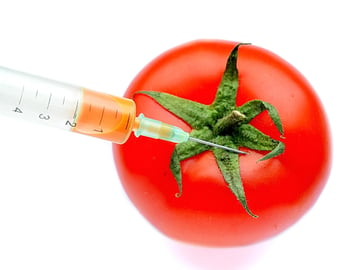The U.S. Department of Agriculture reports that all food prices are expected to increase 7.9% in 2023, with slower growth than in 2022 but still above the historical average rates. Between January 2022 and January 2023 alone, grocery bills were 11.3% more expensive according to the Bureau of Labor Statistics Consumer Price Index. And shoppers have certainly noticed the impact to their wallets, paying slightly higher prices for their items or paying the same for less product.
So, what does that mean for food companies and their production processes in an inflationary economy?
Amidst rising inflation, higher ingredient prices, a possible recession, and ongoing supply chain disruptions, food companies must improve process efficiencies to cut costs but maintain the safety and quality of their products. This can help organizations retain a competitive advantage in a more efficient, sustainable manner without risking the consequences of a costly product recall.
Keeping production costs low in an inflationary economy can be a challenge – perhaps even more so when you consider the guidelines and regulations in place to remain FDA-compliant – but it is possible with proactive planning and strategic execution.
Assess Current Costs
It is important to assess your current expenses and identify any areas where you can reduce costs. Having full visibility into where you are spending resources and to what extent is the first step in keeping your overall costs low.
Conduct an internal audit to dive deep into your manufacturing and production processes and determine where you need to prioritize your attention. During your assessment, look for opportunities to streamline processes, improve inventory management, optimize potential audits, or reduce excess waste – all factors that can help trim expenses.
Leverage Automated Processes
Sometimes the simplest changes can have massive effects on your bottom line. Simplifying your operations by leveraging automation is one way to improve costs.
Evaluate your employees’ workflows and consider what steps are redundant, time-consuming, or overly complicated. By auditing their workflows, you can find areas where automation software can make a huge difference.
For example, maybe your team spends a lot of time formulating products and finds it difficult to translate those formulas into compliant labels. With formulation and labeling software, much of the calculation work can be done for you, and the labels created can maintain FDA compliance.
Another example is in managing suppliers and ensuring they have all the documentation and communications they need. If employees are spending hours trying to manage their email inbox, chances are there’s a software solution that can simplify those processes and save your team hours of rote work. By identifying ways to streamline operations, companies can also reduce waste and the risk of errors, ultimately leading to lower costs across the board.
Optimize Your Supply Chain
Improving your supply chain can help you reduce costs and improve efficiencies, from production all the way through distribution. Again, automated, customizable solutions can help your supply chain run smoothly with documentation management, supplier communications, and faster onboarding of new suppliers if you’re shopping around for lower prices.
Plus, as the industry moves towards whole-chain traceability, you will need to consider how your business can optimize your supply chain and stay compliant with the upcoming recordkeeping requirements (the final FSMA 204 ruling) from the FDA. This requires setting up a traceability plan, communicating that plan to suppliers and employees, maintaining records, and considering how tech-enabled traceability systems can help. Overall, optimizing your supply chain can help to stabilize costs, provider greater visibility, and reduce the impact of inflation on your operations.
Prioritize Sustainable Operations
Energy costs can be a significant expense for many businesses. Businesses need to ask themselves, “Are there opportunities to implement more energy-efficient or eco-friendly practices?”
This might look like spending a little more on energy-efficient equipment to reduce monthly energy usage. Alternatively, you could switching up production times to reduce idling energy usage and prioritize running equipment outside of peak energy times in your area. Another idea is to consider your energy sources and switch to renewables. Reducing food waste is another good measure, which may include dropping suppliers that regularly damage food in transit or considering how food scraps can be used in other food products.
Prioritizing more sustainable operations – from equipment used to product packaging – can reduce energy consumption and your carbon footprint while also lowering overall production costs. (P.S., consumers care about your environmental impact, too!)
Monitor the Market
Market pressures will continue to exist – from pricing pressures, disrupted supply chains, extreme weather, labor shortages, and more. What is working for you now to keep costs low might not be the right approach six months from now. This was a hard lesson many businesses had to learn in 2020, but much of that learned flexibility can still be put in practice today.
As such, take time to continually assess (and reassess) your processes, systems, and procedures. Ensure you are aware of and sensitive to any current or future economic pressures that might affect your bottom line.
Four Ways to Lower Costs Per Unit
As you consider lowering your overall costs, there is also opportunity to lower your production costs per unit. A few things to consider are:
- Increase your production volume, so that fixed costs are spread over more units.
- Establish strong supplier relationships, so that you can reduce the costs of raw materials and negotiate better prices for your ingredients.
- Improve your inventory management operations to avoid overstocking and minimize excess inventory.
- Optimize packaging with sustainable solutions or using recycled materials, so that products are eco-friendly and cheaper to produce and transport.
Harness Technology for Business Resiliency
From increased profitability to more sustainable operations to improved process efficiencies, lowering production costs can bring a number of benefits to your organization. Further, investing in the right technology can help you realize those benefits and retain a competitive advantage in today’s market.
A strong, cross-functional solution can enable greater resiliency for your business amidst economic uncertainty, helping you to better streamline operations, manage suppliers, increase productivity, and reduce costs, among other key benefits. Investing in the right solution can ensure your business is recession-resilient for both the short- and long-term.
Reach out to our team at Trustwell today to learn more about our powerful technology that can help your business stay ahead of the game.
Other posts you might be interested in
View All Posts
Food Industry
6 min read
| September 20, 2018
Food Fraud: Reducing the Risks and Ensuring Food Safety
Read More
Supplier Compliance
8 min read
| May 31, 2018
In Wake of Romaine Lettuce Recall, FoodLogiQ Shares Thoughts on the Importance of Supply Chain Management and Food Traceability
Read More
Traceability
3 min read
| July 21, 2016

